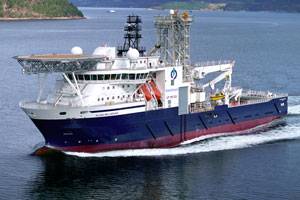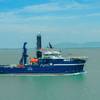StatoilHydro Developments Paying Off
Better drilling methods are making the single biggest contribution to improving recovery from Norway’s offshore fields. A number of solutions adopted by StatoilHydro this year are already yielding good results.
“Downhole intervention and sidetracks from existing wells are the most effective ways of recovering more oil and gas from subsea fields,” said head of subsea technology, Øystein A. Håland. “Adopting new solutions in these areas also yields substantial reductions in operating costs.”
A growing number of discoveries on the Norwegian continental shelf are being developed with subsea installations. At the same time, production is declining from mature fields. Wells need workovers to maintain their output by removing deposits and halting water intrusion. But conventional jobs of this kind have been expensive on subsea developments.
StatoilHydro has now adopted light well intervention (LWI) vessels on a large scale, with two such ships in operation all year round on the NCS.
Compared with the use of traditional drilling rigs, these units cut the cost of well intervention work for the group by 50-70%.
Wireline
During LWI, downhole equipment is remotely operated via a wireline from the surface and – unlike rigs – without a riser. A monohull is also much faster to redeploy than a moored semi-submersible.
“We’ve conducted about 90 LWI operations since starting with these,” reported Øyvin Jensen, head of this activity at StatoilHydro. “They’ve all been successful and have shown good results for health, safety and the environment.”
StatoilHydro has been pursuing riserless wirelining on subsea wells since 2003, with the technology being steadily improved.
“We expect LWI to earn us about NOK 15 billion in 2009,” said Jensen. The group operates some 500 subsea wells on the NCS, which account for more than 40% of its oil and gas production.
Earlier this autumn, StatoilHydro reported a successful first use of through tubing rotary drilling (TTRD) for a sidetrack drilled directly out from the production tubing in an existing well. The company is now in the market to acquire a rig purpose-built for such operations, and hopes to have this new unit in place by 2012-13.
“Our ambition is that this technology will allow us to cut costs for such well interventions by 40%,” said Håland.














